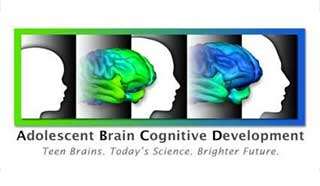Adolescence is a time of many physical, behavioral, and social transitions, not to mention changes in the brain. As part of their normal maturation, people in their second decade of life are beginning to become independent in the world, which means seeking new experiences and taking risks to determine what they are capable of. The state of the adolescent brain reflects this: The structure and circuits governing reward and emotion are more fully developed and tend to win out in the tug-of-war with the still-maturing prefrontal circuits governing judgment and impulse control. The behaviors that arise as a result of this imbalance can be wide-ranging, both positive and negative, including potentially harmful behaviors like substance use. Such behaviors can in turn affect how the brain develops, often in ways that remain poorly understood.

The phrase “more longitudinal research needed” is the bottom-line message in many studies of substance use and other behaviors during this period of life and their long-term impacts—such as whether using drugs increases risk of mental illness (or vice versa), whether smoking marijuana causes lower IQ (or vice versa), or whether vaping leads to increased or decreased cigarette use. This is why we at NIDA are excited to announce that recruitment is now underway for the largest longitudinal study ever conducted on adolescent behavior, brain development, and related health outcomes.
The Adolescent Brain Cognitive Development (ABCD) study, which has been in the planning phase for just under a year, is now recruiting more than 10,000 9- and 10-year-olds at 19 research sites across the United States, and will follow these young people for a decade, through their early adulthood. Recruitment will be conducted over a two-year period through partnerships with public and private schools near the research sites, as well as through twin registries.
The study will collect an enormous amount of behavioral, genetic, and health data on the participants, including MRI scans every other year, so that brain development can be tracked and correlated with a vast range of factors including participation in extracurricular activities like music and athletics; video games and screen time; sleep habits; head injuries from sports; and experimentation with or regular use of alcohol, tobacco, marijuana or other substances, as well as socioeconomic and other environmental variables.
By collecting genetic information from all participants, we will gain insight into individual differences in brain development and the interaction of genes and environment in vulnerability to behavioral disorders and mental illnesses. Inclusion of a large twin cohort (800 twin pairs) will also give valuable insight into the role of genetics in determining behavioral and health outcomes.
Besides enabling researchers to draw stronger conclusions about the developmental impacts of adolescent behaviors and environments, it will also create, for the first time, a baseline standard of normative brain development. Today, when parents take their child to the doctor, their physical development can be plotted and compared to established norms for measures like height and weight, but nothing of this kind has ever existed for brain maturation. The ABCD study data will clarify the normal trajectory of brain development and its developmental benchmarks. At the end of this study, pediatricians will potentially have new brain-imaging biomarkers to determine if a patient’s development is off course, so that they can possibly intervene.
This study is only possible now, thanks not only to advances in neuroimaging and genetic analysis but also to the ability to manage and analyze the vast quantities of data that will be generated. The data gathered will be open access, available to other researchers to perform analyses that we cannot even at this point envision. Parents of 9- and 10-year-olds living near the 19 research sites the have a great opportunity to contribute to this major scientific undertaking, which will contribute greatly to our understanding of development during the second decade of life. ABCD has the potential to inform future educational strategies, prevention and other public health interventions, and science-based policy decisions, and thus NIDA and our partners across the NIH and in other government agencies are proud to be launching this study.
For more information about ABCD, please visit its website at https://abcdstudy.org/. And for more information about how ABCD will contribute to the missions of our partnering NIH Institutes and other agencies, please visit the websites of: National Institute on Alcohol Abuse and Alcoholism, the National Cancer Institute, the Eunice Kennedy Shriver National Institute of Child Health and Human Development, the National Institute of Mental Health, the National Institute on Minority Health and Health Disparities, the National Institute of Neurological Disorders and Stroke, the NIH Office of Behavioral and Social Sciences Research, and the Division of Adolescent and School Health at the Centers for Disease Control and Prevention.
